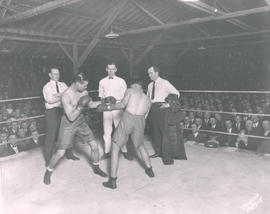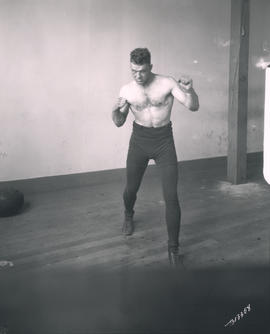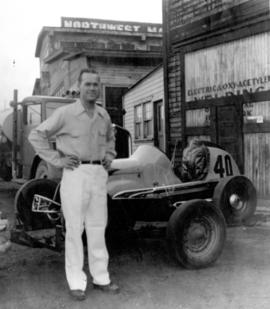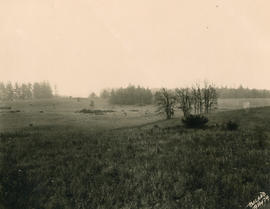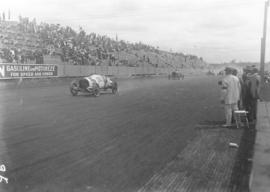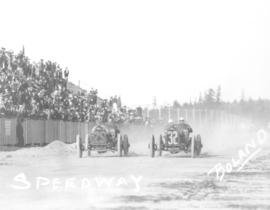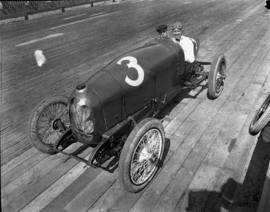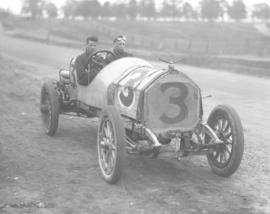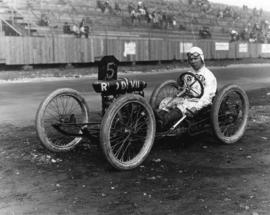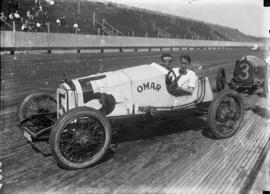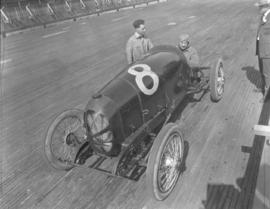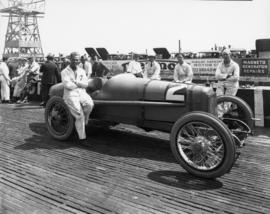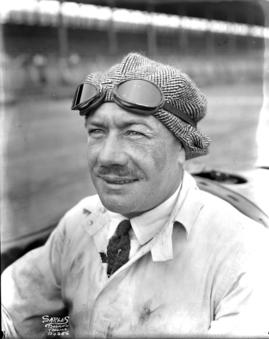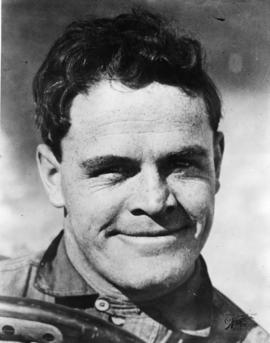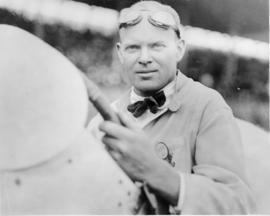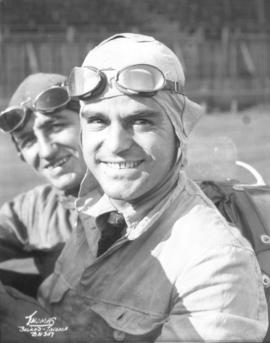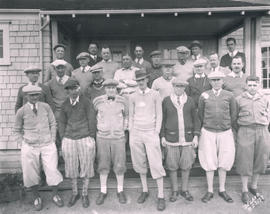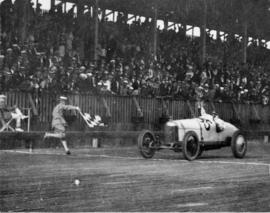- Item
- 1924-01-24
Part of Marvin Boland Photographs
Kay St. Main Event. The Glide Rink is packed with spectators eagerly anticipating the main event boxing match on January 24, 1924. Three stern men, including the referee, observe two fighters in action. It is noticeable that the audience, apparently all male, is well dressed with suits and ties worn. Gene Cline of Oakland and Eddie Roberts of Tacoma headlined the card with a six-round bout. Roberts, a welterweight, decisioned Cline in a tough contest. The boxing match, along with other bouts, was sponsored by the Kay Street Athletic Club. G53.1-130 (Tacoma Sunday Ledger, 1-20-24, C-3-article; TDL 1-25-24, p. 10-article)
Boxers (Sports)--Tacoma--1920-1930; Sports spectators--Tacoma--1920-1930; Boxing--Tacoma--1920-1930; Cline, Gene; Roberts, Eddie;
